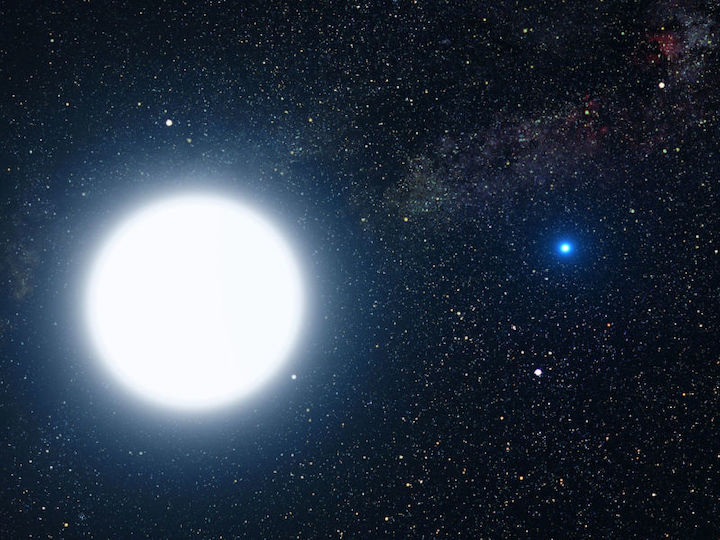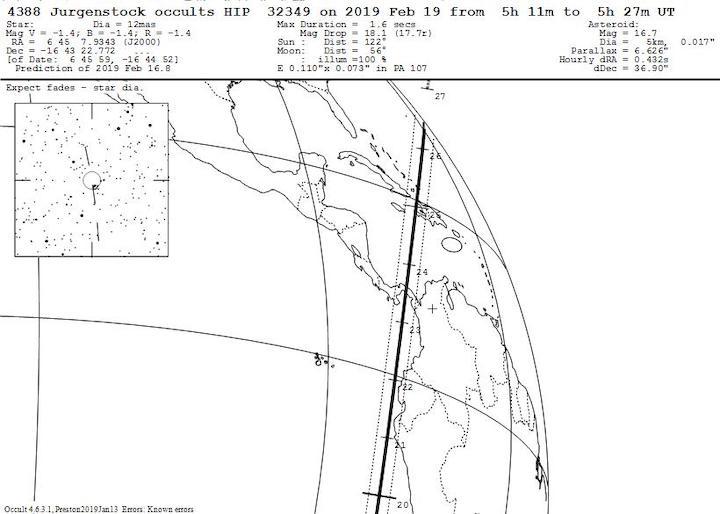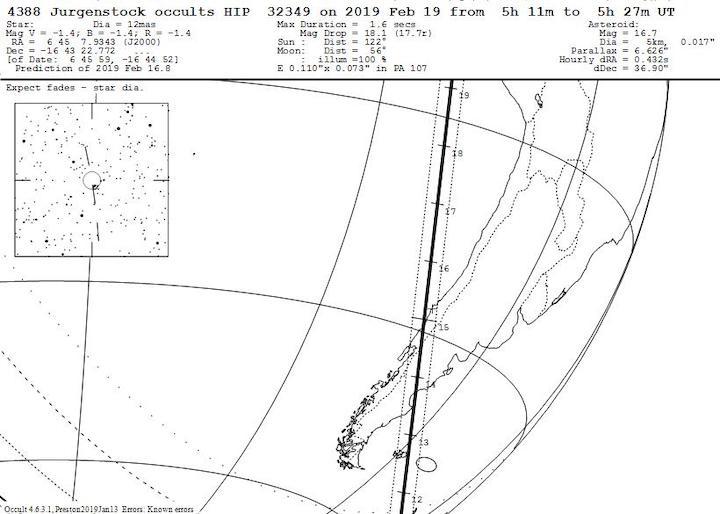20.02.2019

An artist's impression showing the binary star system of Sirius A and its diminutive blue companion, Sirius B.
Sirius, a binary system, is the brightest star in the night sky. The larger of the two stars, Sirius A, is about 25 times more luminous than the Sun, and Sirius is relatively nearby, at less than 9 light years from our Solar System.
On Monday night, for a few areas of South and Central America, as well as the Caribbean, Sirius will probably briefly disappear. This will occur as a small asteroid passes in front of the star, occulting it for up to 1.6 seconds, according to the International Occultation Timing Association. (Yes, the acronym is IOTA).
In this case, the asteroid 4388 Jürgenstock will have an apparent diameter just an iota bigger than Sirius. The angular diameter of the asteroid is about 0.007 arcseconds (an arcsecond is 1/3,600th of a degree of the night sky), whereas the angular diameter of Sirius is 0.006 arcseconds. Thus, as the asteroid passes in front of Sirius, the star will briefly dim, perhaps completely, before quickly brightening again. Sirius may appear to blink once, slowly.

Unfortunately, the path for this event will occur mostly over water. Based upon maps from IOTA, the occultation will appear over snippets of Argentina and Chile, Panama, the tip of Haiti, and possibly Turks and Caicos. There remains some slight uncertainty in the timing, which is expected to occur along its path beginning at 05:11 UTC and ending at 05:26 UTC on Tuesday, February 19.
With a diameter of 4.7km, this inner-asteroid belt object was discovered in 1964 by an astronomer named—you guessed it—Jürgen Stock. This occultation should allow astronomers a rare opportunity to better characterize the dimensions of the asteroid. It is likely to have an irregular shape—further contributing to the uncertainty about the extent to which it will block the light from Sirius.

Sirius has long held a place of significance in many cultures due to its exceptional brightness in the sky, with more than four dozen known names given to it. The commonly used name Sirius has Greek origins, meaning "glowing."
The star may play a significant role in future exploration, as well, because the luminosity of Sirius means that it is a good candidate for the first interstellar solar sail missions. The star brightness would aid the solar sail craft in slowing down as it neared the star system. As of yet, there are no confirmed planets around either of the two stars, however.
Quelle: arsTechnica
